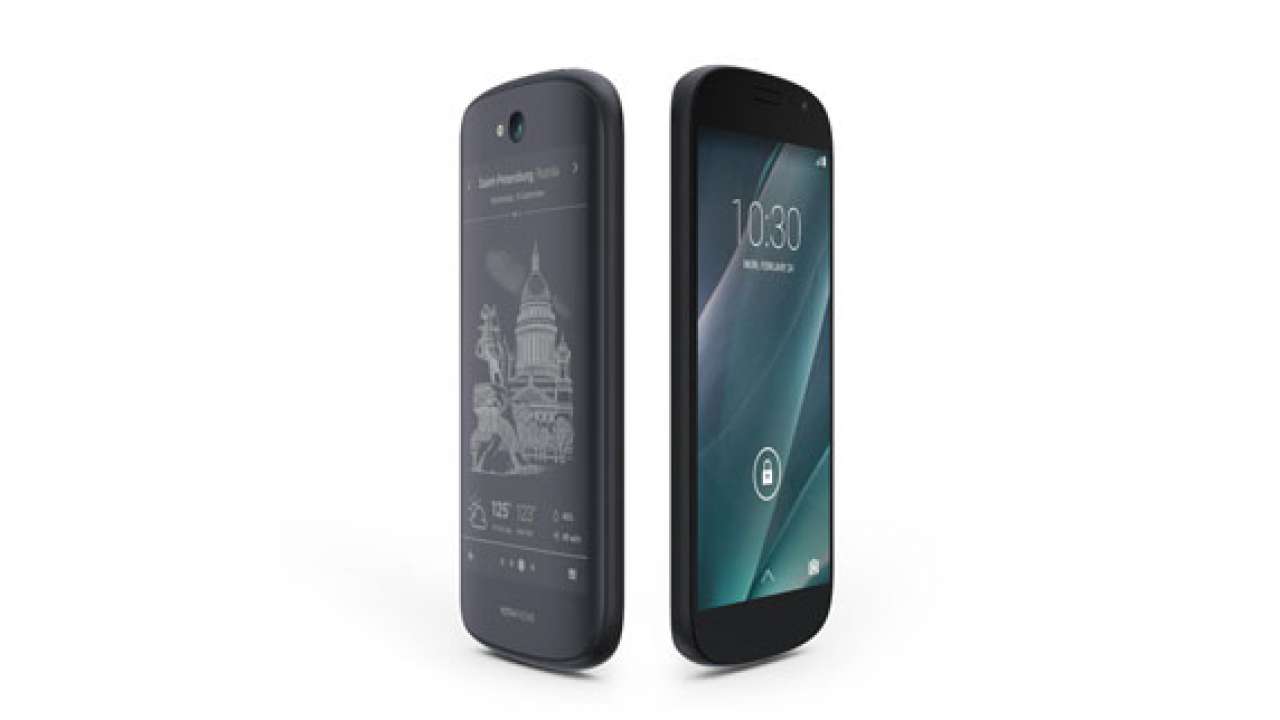Dual-Screened YotaPhone 2 Coming December 3

There’s no question that the Android platform has engendered the widest variety of smartphone shapes and sizes. However, despite the freedom that Google’s open-source mobile operating system has afforded OEMs, most Android handsets – with a few notable exceptions – are basically variations on the same theme: flat slabs with a few UI tweaks here and there.
But a Russian mobile company called Yota is getting set to release a device that is truly unique: its second smartphone – the YotaPhone 2 –features an LCD touchscreen on one side and a low-power e-ink touch display on the other. It’s bizarre, but it’s also beautiful, and it’s coming out in Europe and other territories starting on December 3.
The company published this tweet earlier today to spread the good news:
#YotaPhone2 will be presented December 3! We will celebrate with a by-invitation only event in London – stay tuned! pic.twitter.com/Ip7ImCSu5F
— YotaPhone (@YotaPhone) November 17, 2014
The invite-only event in London on December 3 ought to offer up all the details we can only speculate about, at least in terms of specs, pricing, and availability. There are a few guesses we can make right now, though. The original YotaPhone, released last February, boasted a 4.3-inch screen on each side (also LCD and e-ink), and was powered by 2GB of RAM and either 32 or 64 GB of internal storage with a 1.7 GHz Krait CPU. Those specs are solid, but the real twist is the low-power e-ink back display. All together, the first YotaPhone costs upwards of $500 unlocked right now from third party sellers.
It stands to reason, then, that the new version coming out in December will improve on at least a few of these specs – probably a faster CPU, if nothing else – and will also cost a bit more. I’m guessing maybe $600? Additionally, a post on TechCrunch reports that the e-ink display is also touch-capable now, a feature that was missing from the first version.
While you may be happy with your current Android handset, it’s hard not to be a little mesmerized by the YotaPhone idea. If it’s a hit in Europe, maybe the company will go the extra mile and release the handset in the United States sometime down the line.
[Source: TechCrunch]